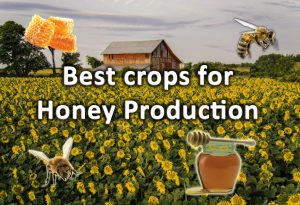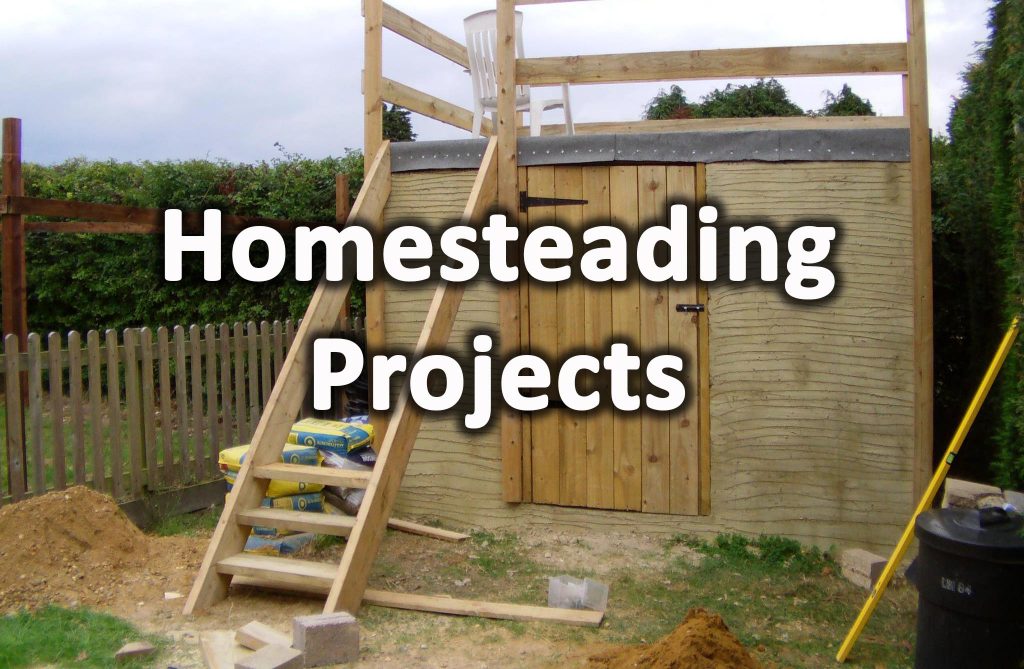Homesteading can be an extremely rewarding lifestyle and a lot of fun. However it is has to be said that homesteading is also a lot of hard work. There are always jobs to be done both in the home and on the land.
As homesteaders are always striving to be as self sufficient as possible they rarely pay contractors to carry out work. Therefore they are always doing things for themselves, picking up new skills and pushing the boundaries of what’s possible.
This means homesteaders are involved in a continuous process of learning and developing their plot.
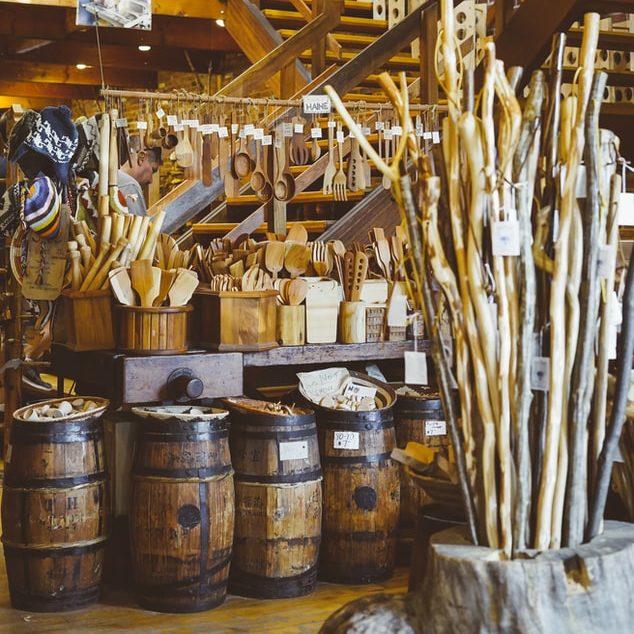
In striving to become as self sufficient as possible trial and error can mean new discoveries and new ideas. This leads to ongoing development of the homestead trying out new projects and expanding.
There are so many opportunities when it comes to developing a homestead, the more space you have the greater the possibilities. From planting food forests to processing your own oil or becoming a beekeeper there are simply so many exciting options.
Hence we have put together a list of 31 great homesteading projects you could get started on today.
1. Spring house
A spring house is a small house or shed like structure consisting of a single room. Historically these were built over a spring to stop debris and fallen leaves from falling into the fresh water.
However overtime these became more important for storing food by keeping it at low temperatures. Springhouses are cool, ventilated places, perfect for storing vegetables and other produce.
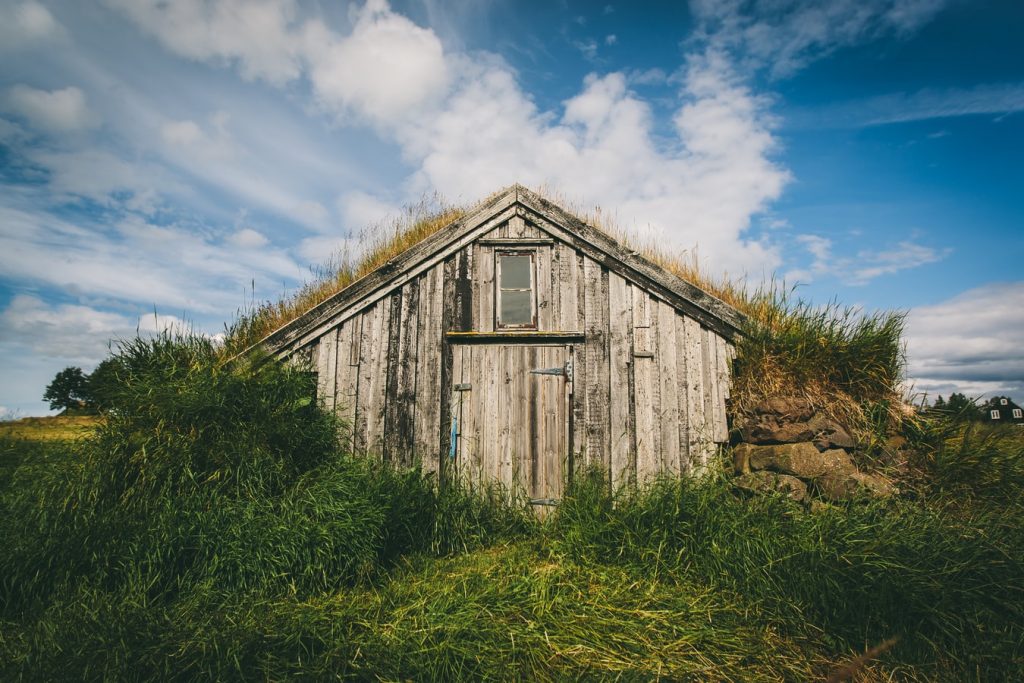
All you need to do is find a shady location, preferably with water nearby or rocks. Then build a shed like structure that is not too far from the home and you are ready to go.
2. Fish ponds
It may not occur to many homesteaders that even relatively small fish ponds can be very useful. Fresh water fish such as carp and catfish can multiply even in ponds with volumes as small as 25 cubic metres squared.
The larger the pond the more fish for the table you will be able to raise. Fish ponds bring the added benefit of providing easy drinking for livestock and crop irrigation.
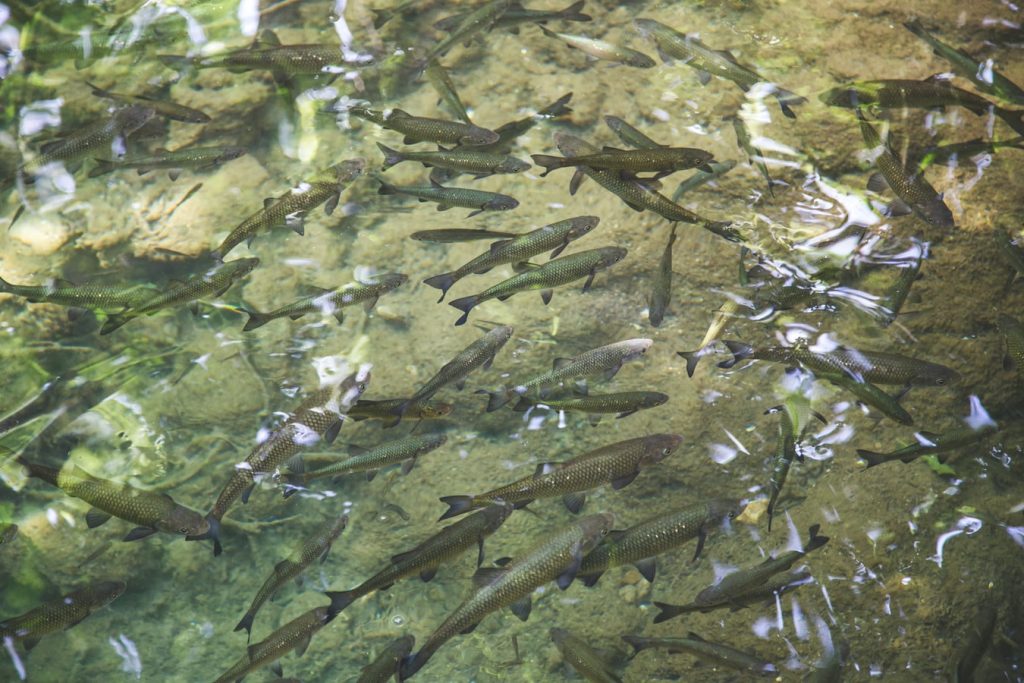
The more expansive and wild your pond is the more you will be able to harvest it for food. The pond will also encourage game to visit your property providing many hunting opportunities.
3. Irrigation swales
Particularly in homesteads with hot summers obtaining enough water for irrigation can be an issue. If you cannot install a large pond there is always the option of creating an irrigation swale.
These do take some knowledge of topography and hydrology but are a relatively simple concept. By manipulating surface, water, runoff with collection swales you can divert storm water to crops.
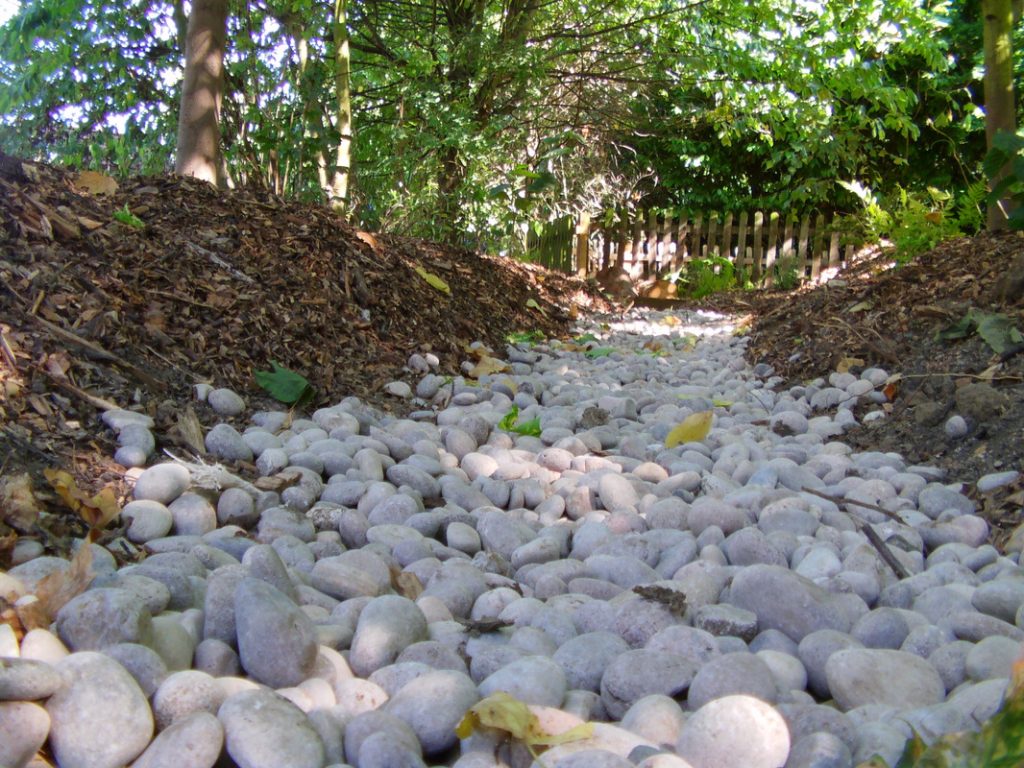
The swales are basically a series of ditches that distribute rain water to growing areas. Used wash water and guttering from the home can also be diverted into these swales.
4. Green roofs
Green roofs are a great way to make use of roof spaces especially if they are not too pitched. The flat roofs of sheds and agricultural structures are perfect for green roofs which have many ecological benefits.
The best use of green roofs on a homestead is to create new growing areas. These do not have to have a very deep substrate either. The sunny roofs can be utilised to grow herbs which love well drained soil and full sun.
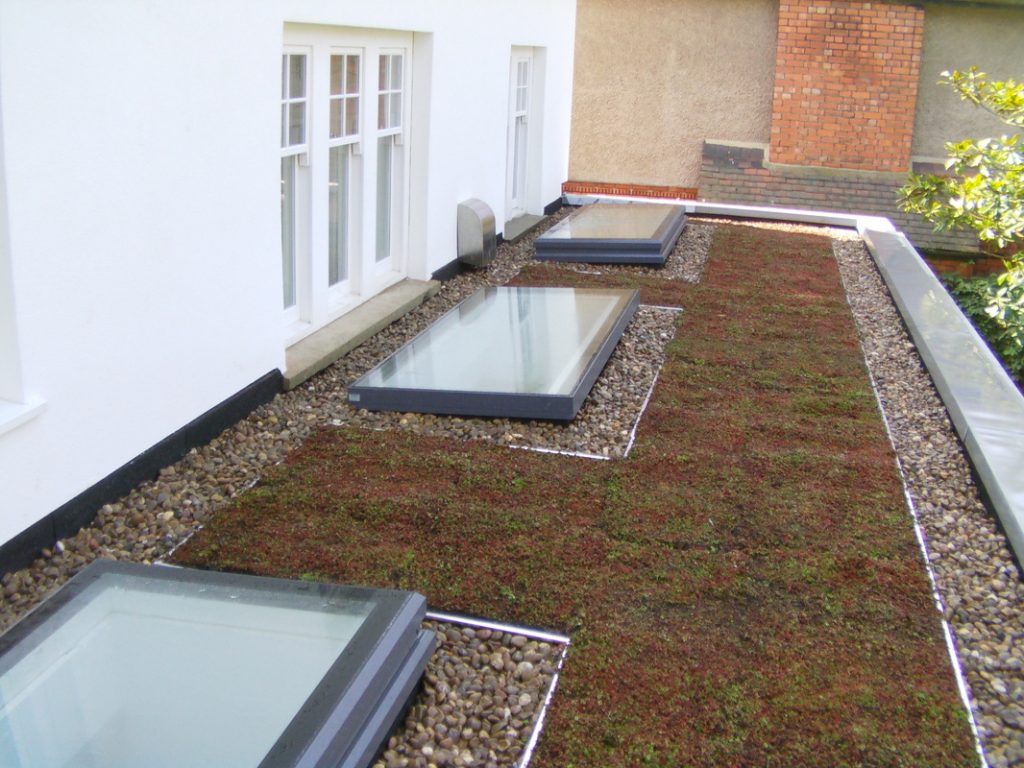
Herbs like thyme love these kinds of environments and raised beds can produce even larger crops. Just make sure your structure is robust enough to take the extra weight.
5. Build a dry store
The most common type of dry store is a basic log store but dry stores can range in size and uses. By building a large, undercover space you can undertake a number of worthwhile pursuits.
Some of these include; drying clothes, outside cooking, drying herbs and seasoning wood. Dry stores are very easy to make generally consisting of support columns and a slanted roof. Make sure the lowest end of the roof is facing the prevailing wind of your area.
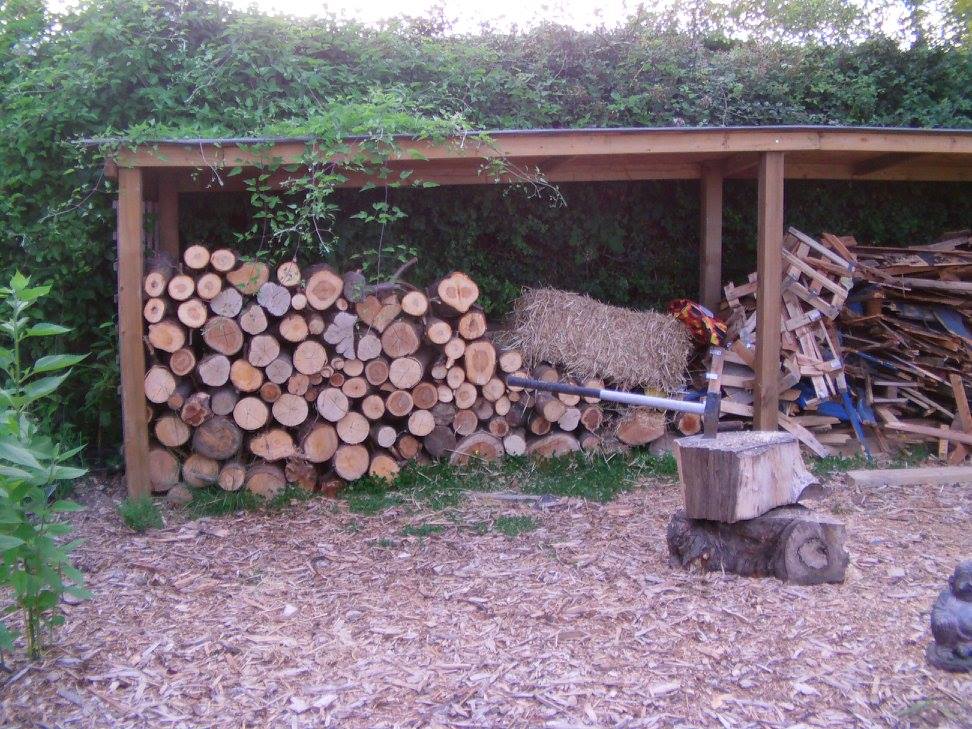
6. Meat curing
Meat curing is a process of preserving meat by covering it in salt. The salt helps to dehydrate the meat preventing bacteria from spoiling it.
This works best in cool climates and the salt can also enhance the flavour. Meat curing is particularly useful if you raise meant animals or hunt. This is a very effective method of meat storage if you have long, harsh winters.
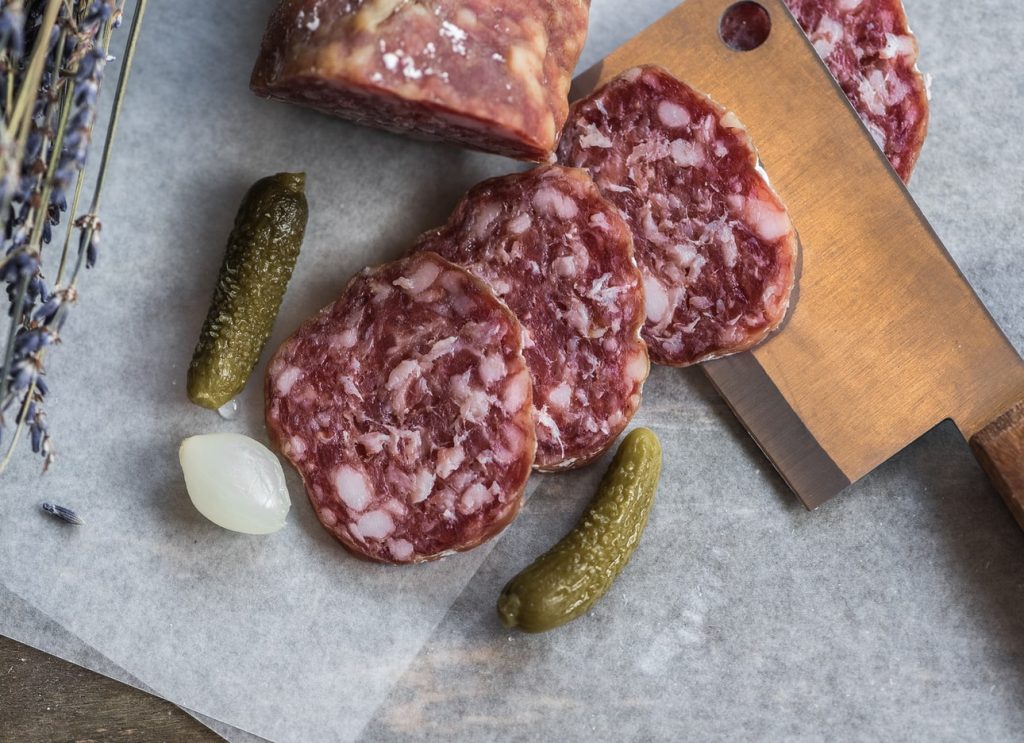
7. Build a smoker
Smoking foods such as meat and fish is a method of cooking and preservation which has been practiced for millennia. The smoke penetrates the meat both cooking it and drying it.
This eliminates the opportunity for bacteria to grow and spoil the meat. Smokers are vessels which hold smoke in the air so food can hang and become smoke cooked and dried.
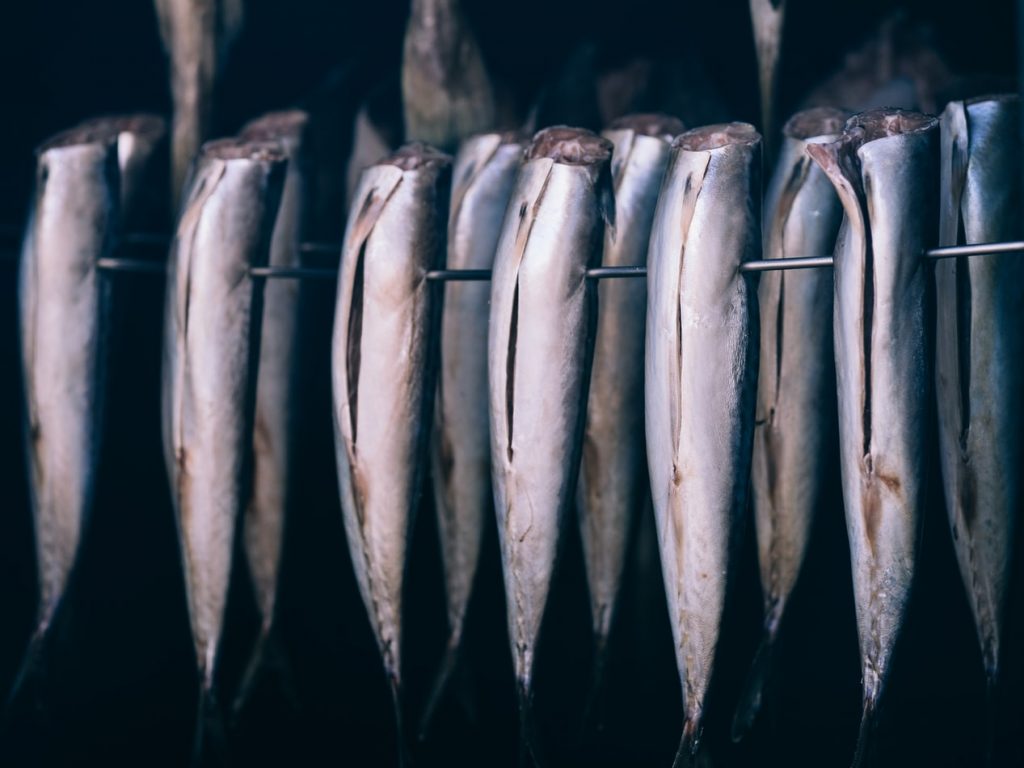
These can take the form of cupboards or whole sheds depending how much meat you produce. Smokers can be a fun project for homesteaders and can double up as a storage space.
8. Wine making
Wine making is an art! What better way to make use of a fruit harvest than to make alcohol? You do not necessarily need a vineyard to make wine either you can make wine out of any fruit.
Plums make particularly good wine but you can also use blackberries, elderflower, or raspberries. Once you have mastered the basics you can start to produce it in large vessels. You will soon become the most popular homesteader in the village for sure!
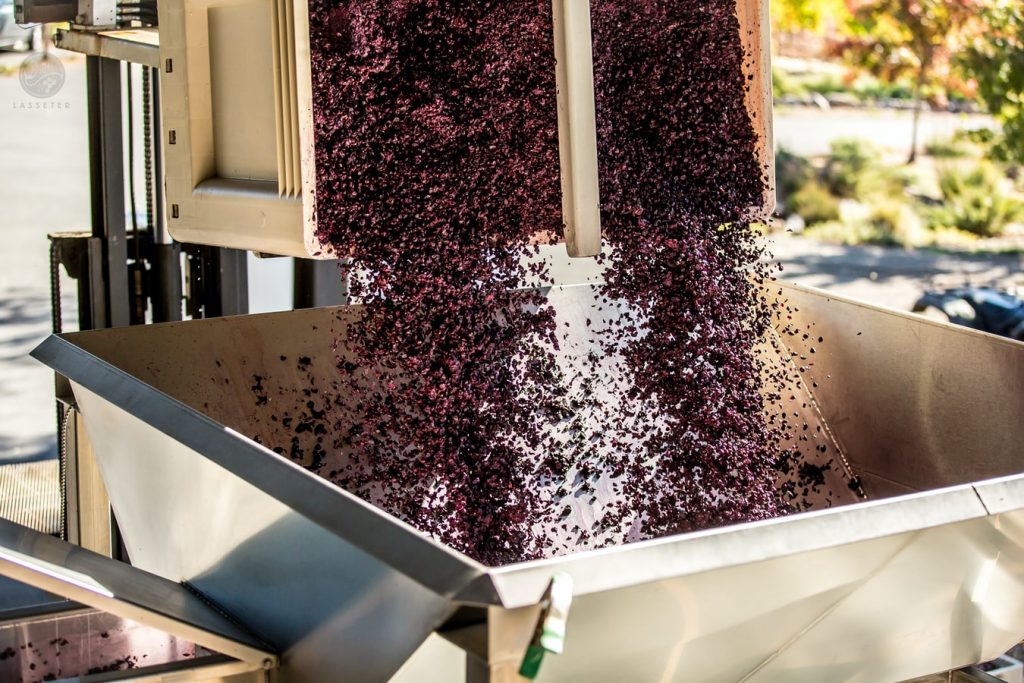
9. Making vinegar
Leading neatly on from making your own wine making vinegar is another benefit of winemaking. Wine can be left to oxidise turning it into ‘wine vinegar’. Vinegars are extremely useful to homesteaders as they can help you to preserve and flavour food.
Preservation can be done by pickling; here the acidic vinegar prevents bacteria from turning food produce bad. Some of the most popular things to pickle are eggs, walnuts, eggs, gherkins, beetroot and onions. The vinegar can also be bottled, sold or exchanged for other goods.

10. Plant a coppice
Coppicing is a type of forestry management which involves cutting trees down to their base. Trees can also be cut 2 metres off the ground which is known as pollarding.
The reason for this is it encourages trees to produce numerous vertical pole like branches. These can grow very quickly and within three years can produce perfectly straight timber poles. These are perfect for fence making or tool handle shafts.
These long poles are also perfect when dried to fuel rocket stoves or for charcoal making. Coppices can be managed on a three year rotation for a continuous, annual supply. By using hazel and sweet chestnuts you can also ensure a nut crop every year.

11. Charcoal making
Before the industrial revolution and the extensive use of coal, charcoal was the fuel of choice. It was used for heating homes, cooking food as well as industrial processes such as forging metal.
For homesteaders who wish to be completely self sufficient charcoal is the perfect, sustainable, fuel source. Charcoaling goes hand in hand with coppicing and forestry management.
The pole like timber is perfect for cooking the inner wood evenly. Timber is stacked into a metal vessel which is then surrounded by fire. The result is cooked and charred, charcoal which is perfect for burning slowly at high temperatures.
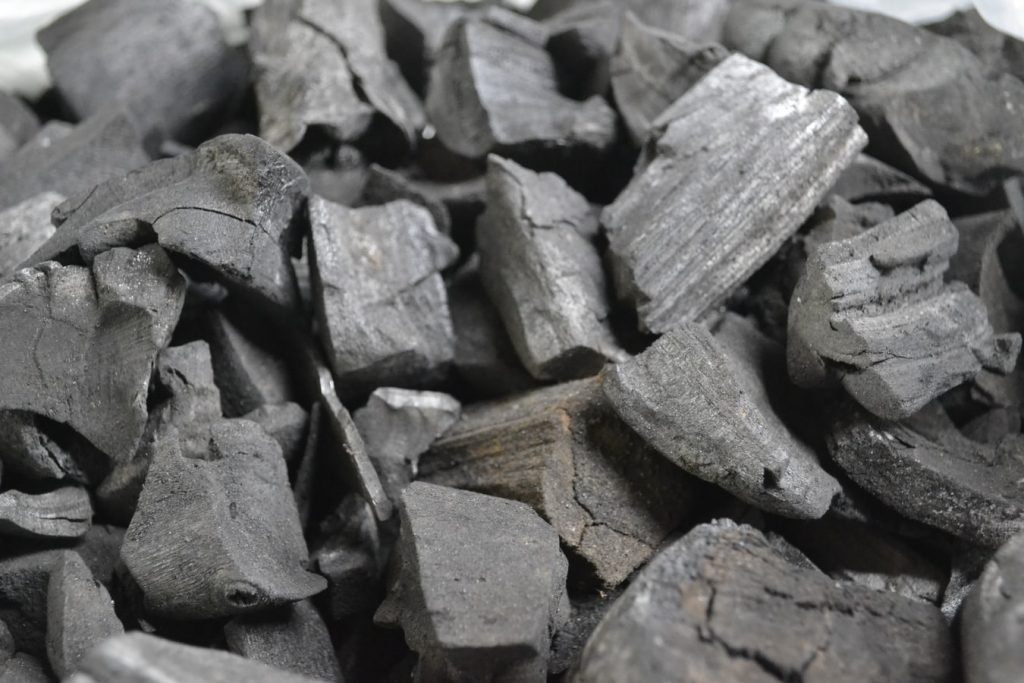
12. Grow mushrooms
There are many different types of mushrooms and can be an edible delight if you know what you’re doing. There are many different ways of growing these depending what types of mushrooms you want to grow.
Button and chestnuts you buy in the shops can be grown on sterilised hay or sawdust. If you have extensive amounts of bark chippings you can grow wine caps.
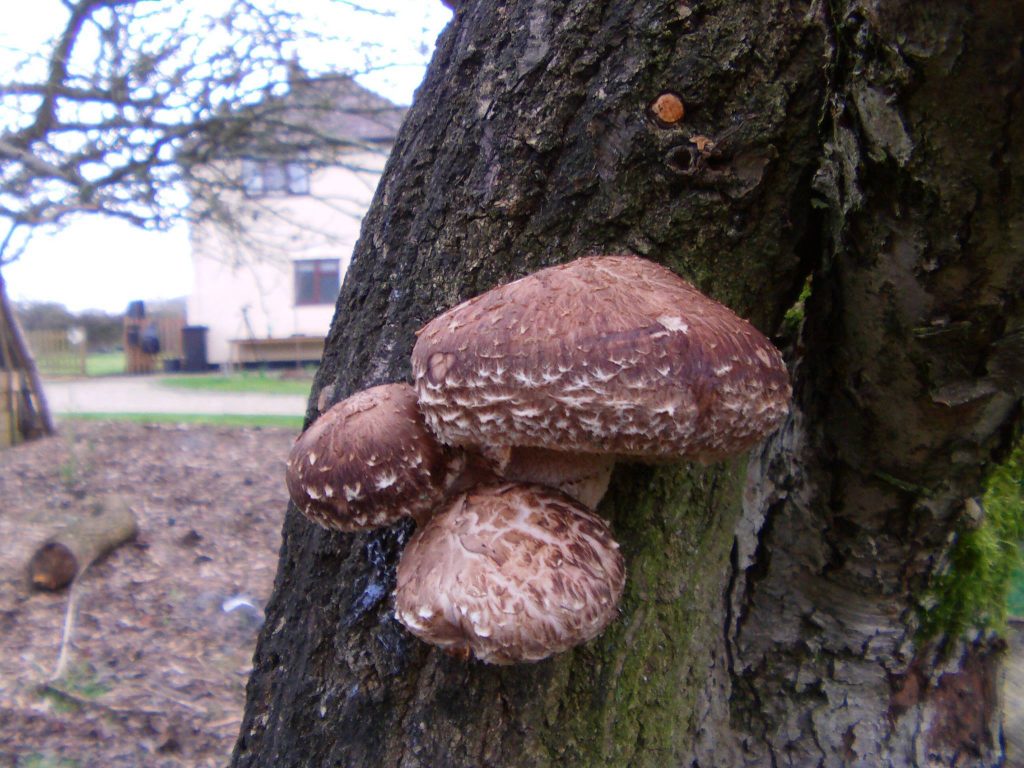
Oyster mushrooms and shitakes are some of the best to grow on logs. The great thing about mushrooms is they can produce a crop in damp shady areas where nothing else grows.
13. Create a food forest
Food forests can be very effective at producing food crops but in an unconventional way. Instead of ploughing the soil every year and planting annual crops food forests become a reoccurring food source.
By replicating what happens in natural woodland the suns energy is captured by layered vegetation. Fruit and nut trees of varying heights combined with fruit bushes and perennial vegetables create an edible forest.
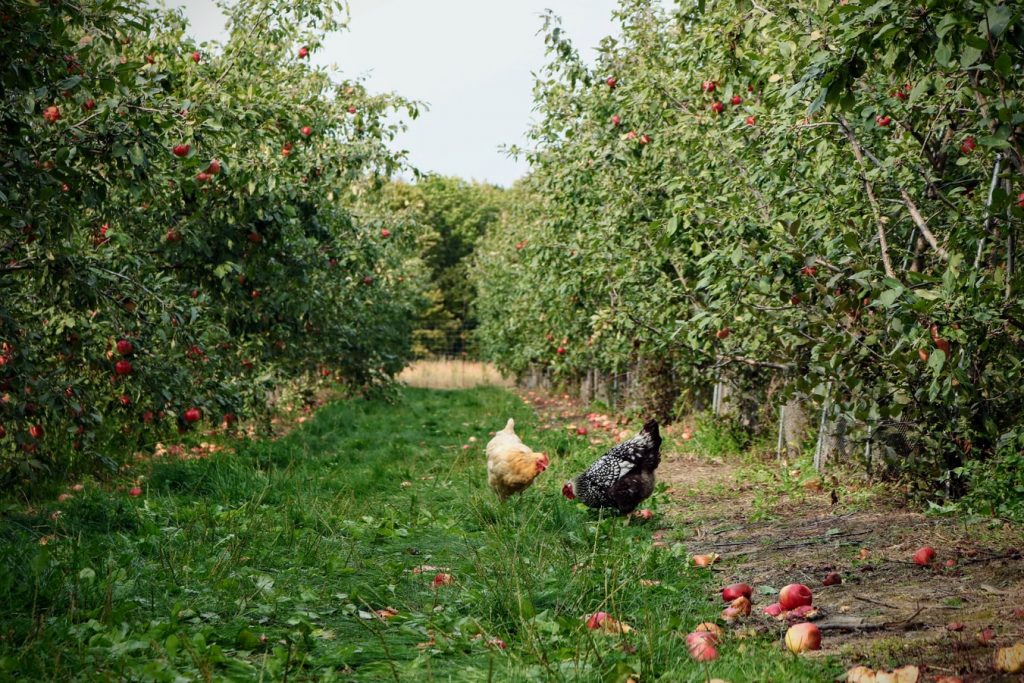
Once established these forests are virtually no maintenance at all and can be very productive.
14. Homemade oil
Oil is an extremely useful resource which can be used for cooking, fuel or a rich source of calories. By growing crops such as olives, sunflowers, corn and certain types of vegetables you can produce your own.
This typically requires some work and an oil press but can be a worthwhile venture for a self sufficient homestead.
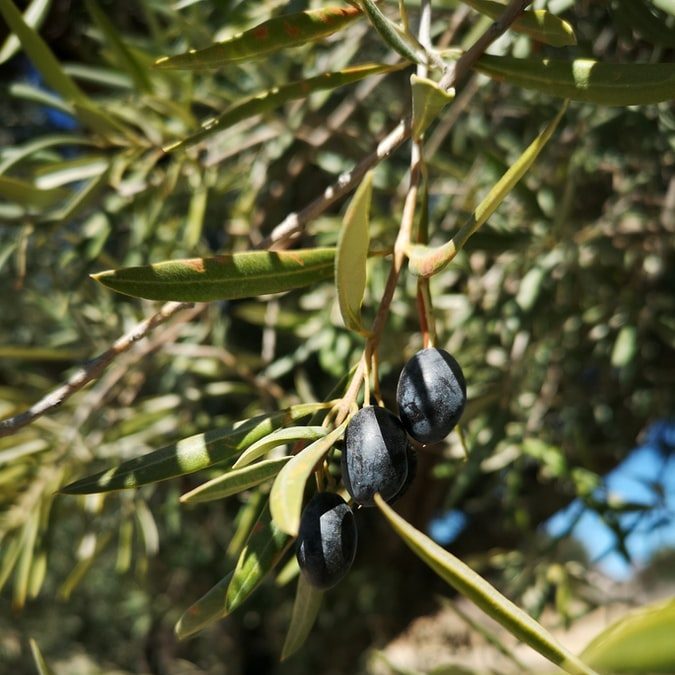
15. Build an outside oven
Outside ovens have been used in the Mediterranean regions for thousands of years. These ovens are perfect for cooking stews, breads and of course, pizza! If positioned correctly, these can act as a patio heater as well as an oven.
If cooking for an event you can start the fire a day before! Place your stews to slow cook over night, the next day they will be warm and ready to serve. These can also be a great gathering place for a self sufficient homestead.
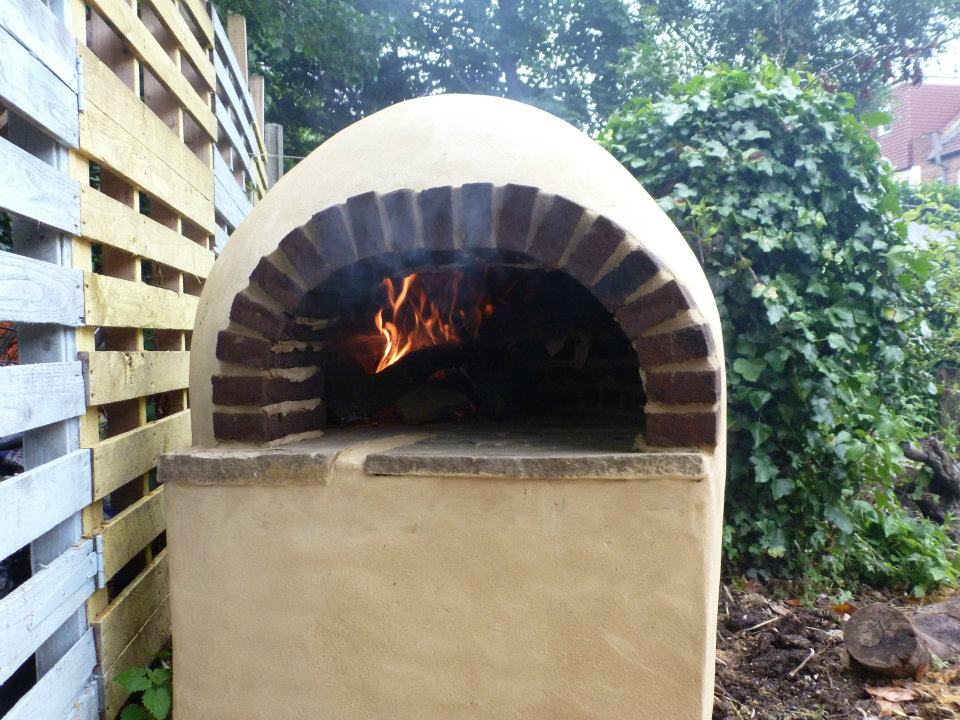
16. Plant an edible hedge
Hedges have been an effective great way to create a physical barrier since the dawn of agriculture. However not many have had the foresight to plant an edible hedge!
These can be planted with plums, damsons, hazelnuts, chestnuts, black currents and gooseberries. You can even plant them with unusual but useful shrubs such as schezwan pepper.
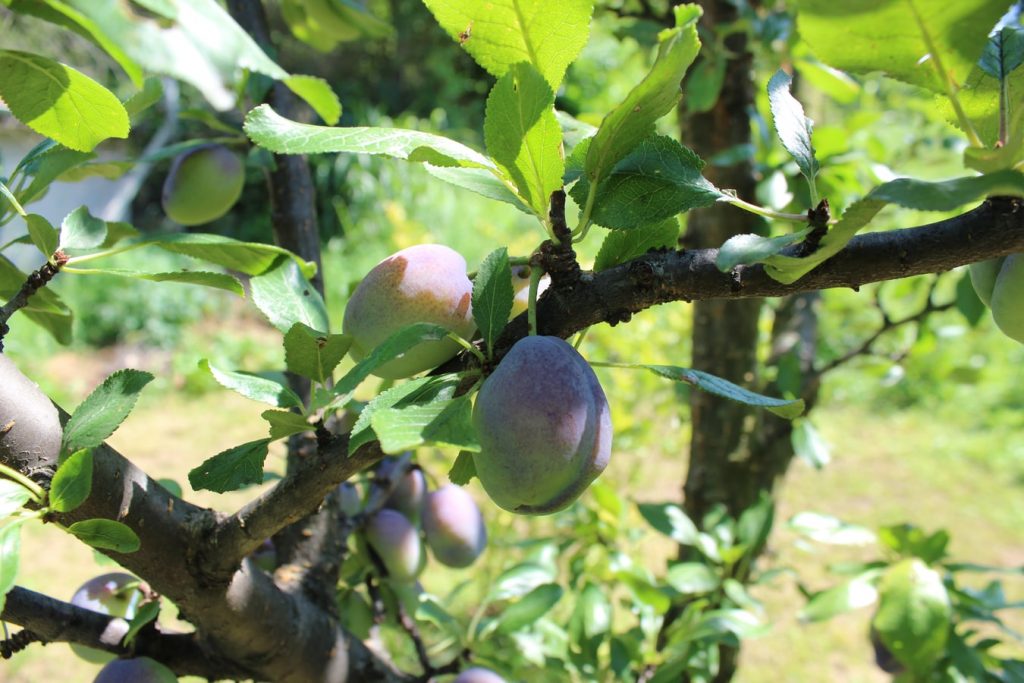
17. Make cheese
If you have cows and goats cheese making is a great way to make use of excessive amounts of milk. There are so many different types of cheese which you can make!
This can depend on what breed of animals you keep or the methods of cheese making you use. Cheese can store for long periods of time and is rich in protein, fats and calcium. This makes it the ultimate survival food for the self sufficient homestead.
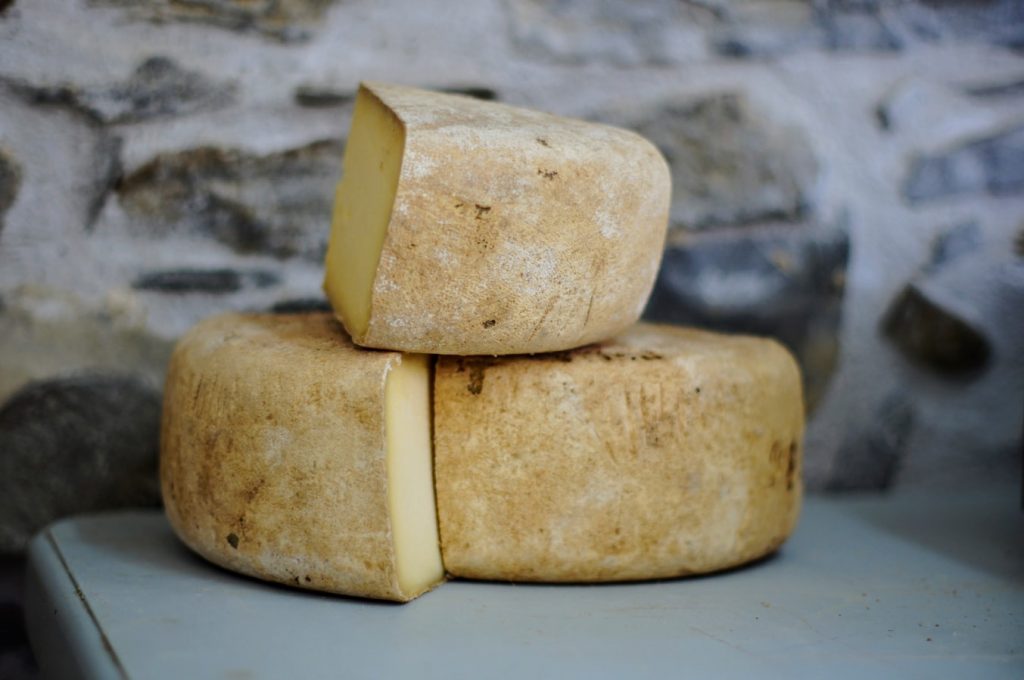
18. Cheese waxing
If you are already into cheese then cheese waxing is another project which can be of use to you. Waxing cheese is a method of covering cheese in hot wax to provide the perfect environment to age.
The wax prevents the cheese from drying out and protects it from harmful bacteria. Waxing also helps to store the cheese for long periods of time, perfect for homesteading.
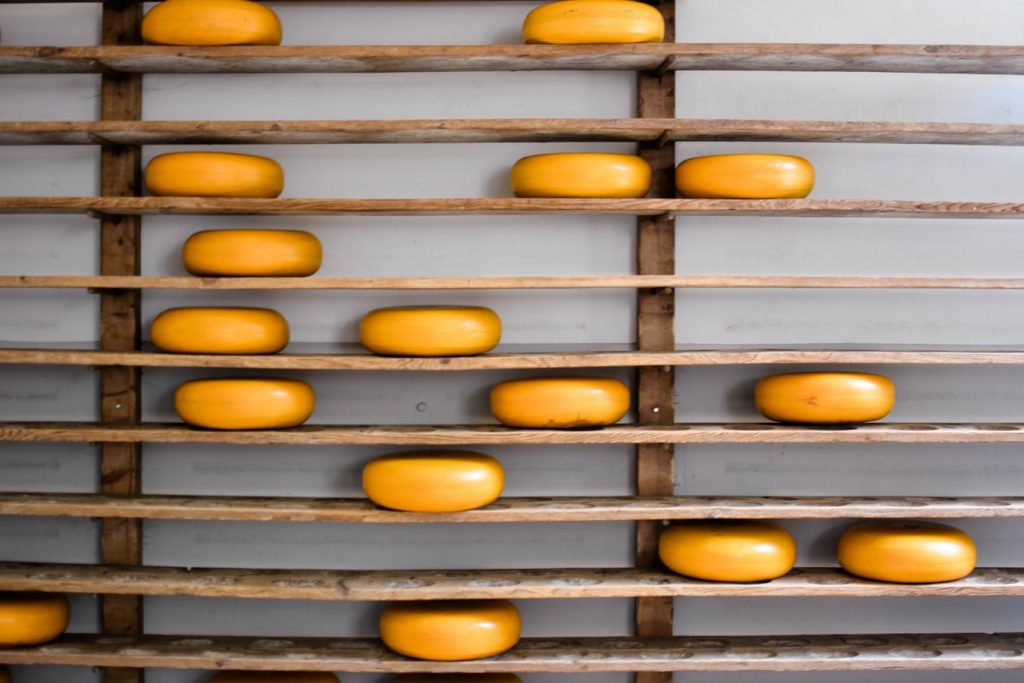
19. Make a greenhouse
Greenhouses are extremely beneficial for growing fruits and vegetables. Growing under cover in this way enables you to extend your growing season so you can produce more food.
Greenhouses also allow you to grow exotic crops in the summer and hardy vegetables in the winter. There are multiple ways of making a greenhouse from large rigid structures to small plastic tunnels.
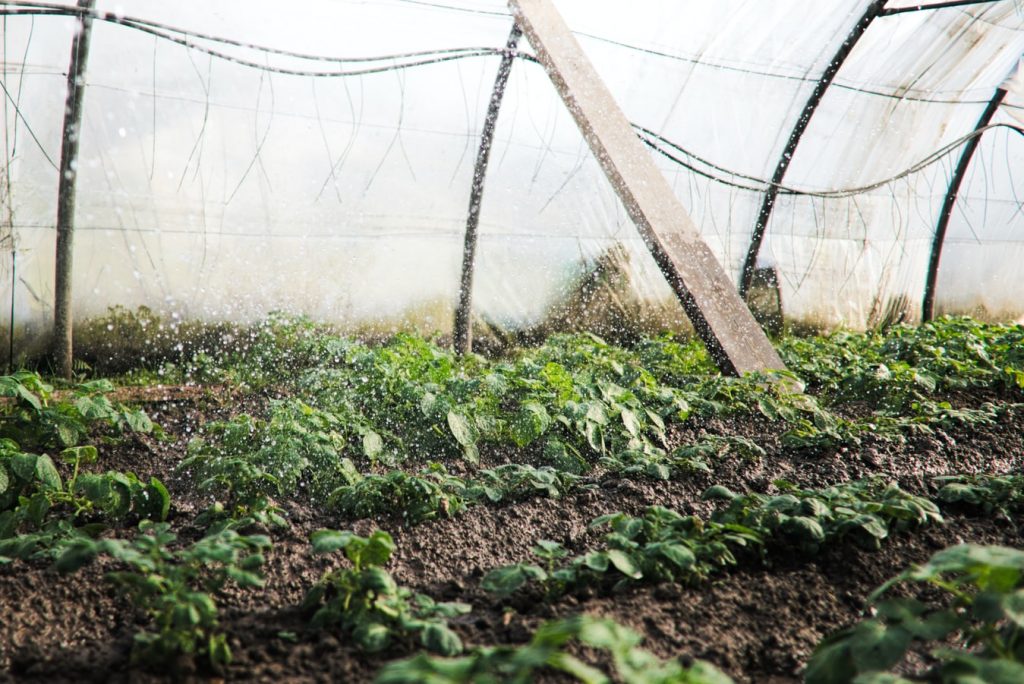
Why not check out my video on growing under cover for homesteaders below
20. Create power
Creating electricity is not always thought of as a possibility but is possible with an initial investment. This is particularly worth it if you can tap into natural power sources in your locality.
These can include excessive amounts of annual sunshine, strong winds or a fast moving river. All of these can be turned into electricity with the correct conditions and some ingenuity. Solar panels, wind turbines and hydraulic wheels are all examples of these.
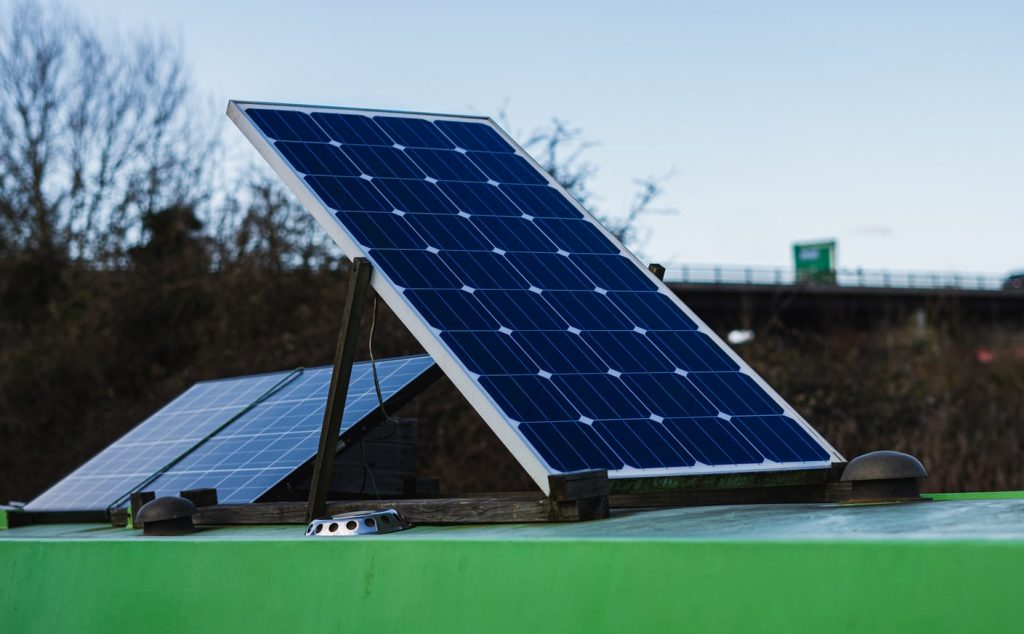
21. Plant an orchard
Orchards are a great way to produce many of crops without continuously, ploughing the soil. These can be planted with a similar species for mass production or more variation. Nut orchards can harvest the same amount of dietary calories per acre as wheat.
They also have the added benefit of containing lots of omega 3 fatty acids and are easy to store. Apples and pears can be made into cider and fruits can be dried for long storage. Once established, orchards are extremely energy efficient and productive for self sufficient homesteading.
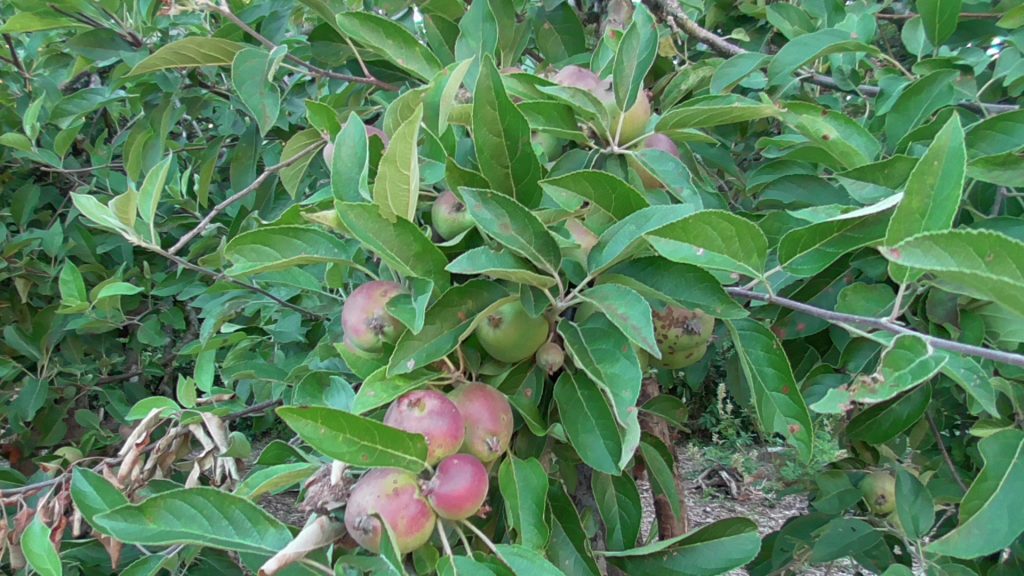
22. Build an aviary
Aviaries are large enclosures typically made with wire to house birds. However aviaries can also be great ways to build generous chicken runs. Aviaries can also be good ways to raise other small livestock such as rabbits and pheasants.
These aviaries can provide protective growing areas for fruit bushes allowing you to stack functions. Climbing crops such as beans, squash and grapes can be grown up the aviaries sides for extra production.
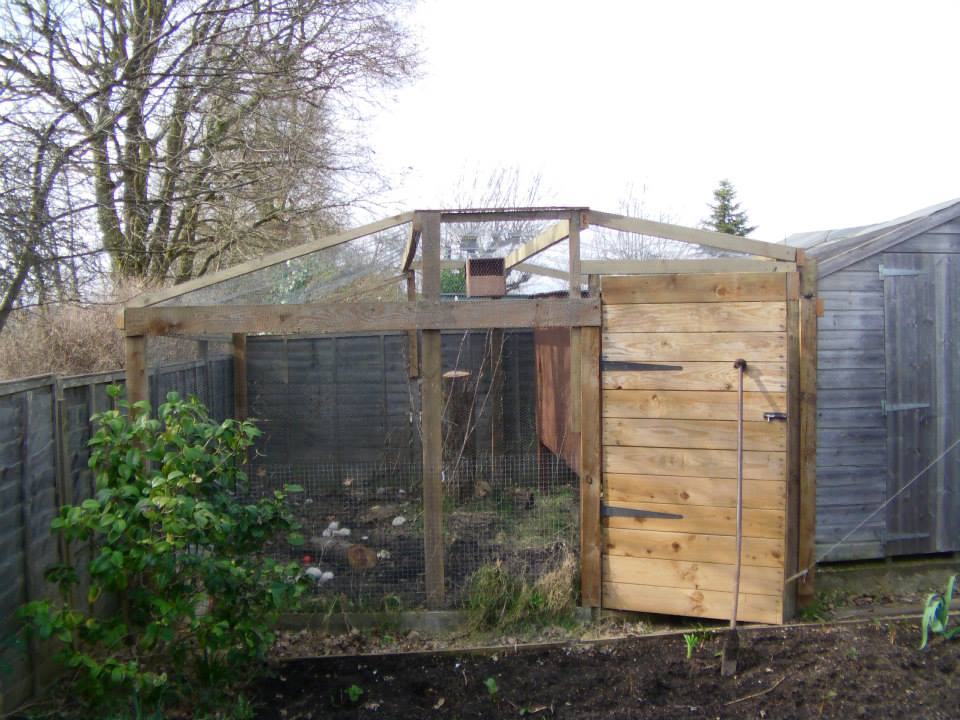
23. Build a solar dryer
Solar dryers are an extremely energy efficient way of drying home grown fruit and vegetables. These work on the principle of heating air using sunlight to create a warm updraft. This updraft passes through a series of net shelves where you put your fruit.
As the air passes through it warms and dehydrates the food. These are typically built like a long, vertical cupboard with a fine mesh front. The air is heated using black, metal tubes which feed into the base of the dryer. These can provide an extremely effective way of dehydrating food for long, winter storage.
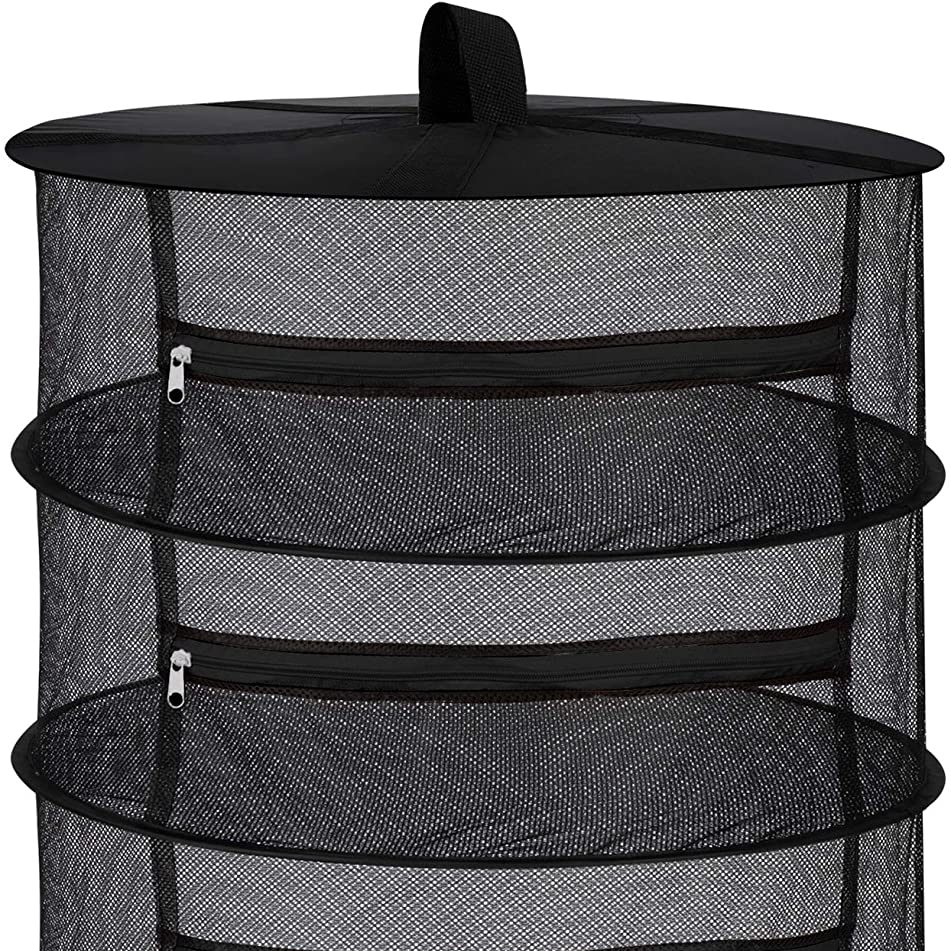
24. Build a storing rack
Storing racks are a simple but effective way of storing fruit and vegetables during the winter. In their simplest form these can look like glorified food racks. More advanced versions can have sliding compartments filled with sawdust for storing root vegetables.
Storing racks that utilise vertical space are extremely useful for self sufficient homesteading. Crops like onions, apples and squash can store for months in these well ventilated structures. They also allow you to keep an eye on the produce in case anything goes bad.
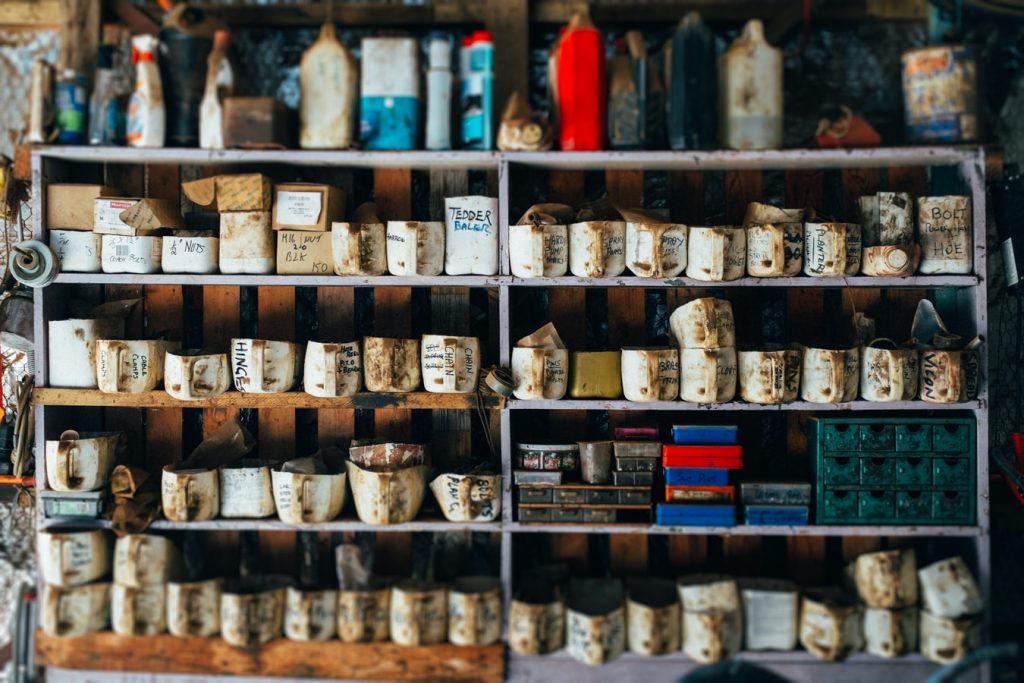
25. Install a dovecote
Dovecotes were once common place in rural homesteads and still are in some locations. Providing roosting for pigeons does not seem like a good idea for many people. However doves and pigeons can be a reliable food source if you do not have access to animal feeds.
Pigeons can produce multiple young throughout the year. Commonly known as ‘Squabs’, these young birds can occasionally be harvested for the table. This slow and steady harvesting can be maintained for years on end with birds feeding themselves from the surrounding environment.

26. Build a fruit cage
Fruit cages are a great way to produce lots of fruit without the worry of it being taken by pests. These can be made to contain one fruit species or multiple varieties. Fruit cages can also be a good place to raise young poultry before they join the main flock. Nitrogen fixing beans can be grown up the structure to provide a secondary crop and feed the fruit trees.
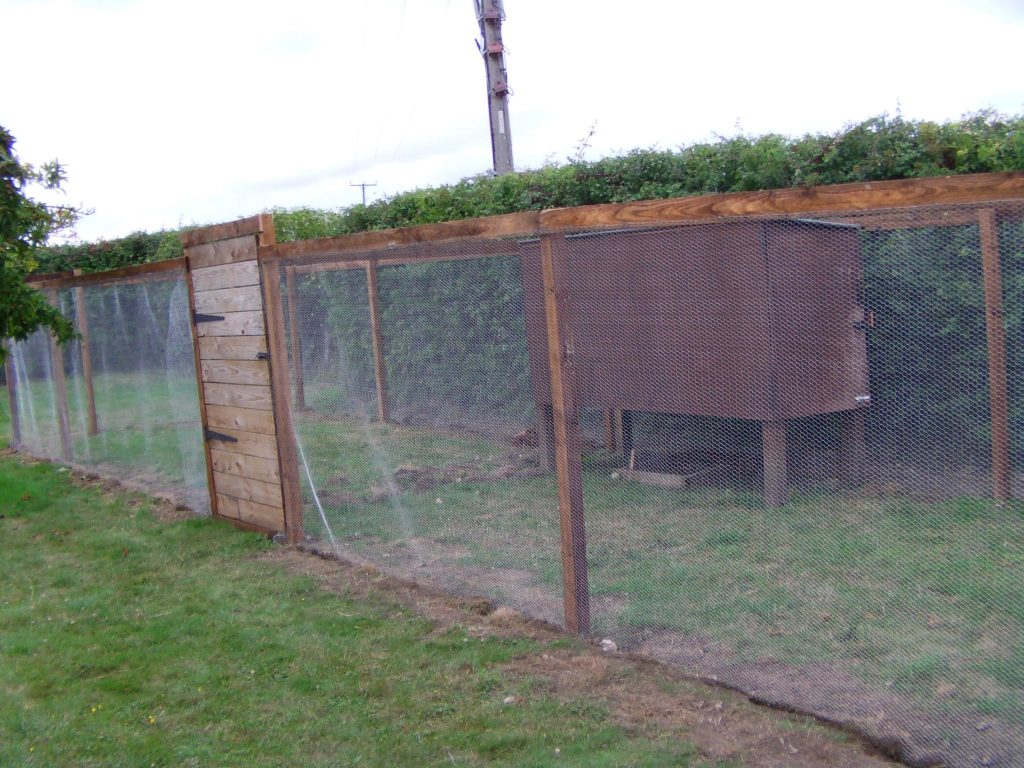
27. Build raised beds
Raised beds are a great way to provide extra fruit and vegetable plots. This is especially so if you have bad quality soil or particularly boggy ground.
As well as providing better drainage raised beds allow you to add your own soil medium. This can greatly improve a sites soil quality and boost productivity. Raised beds are usually built with thick timber like sleepers or brickwork. They can lift growing areas up off the ground allowing them to receive more sunlight.
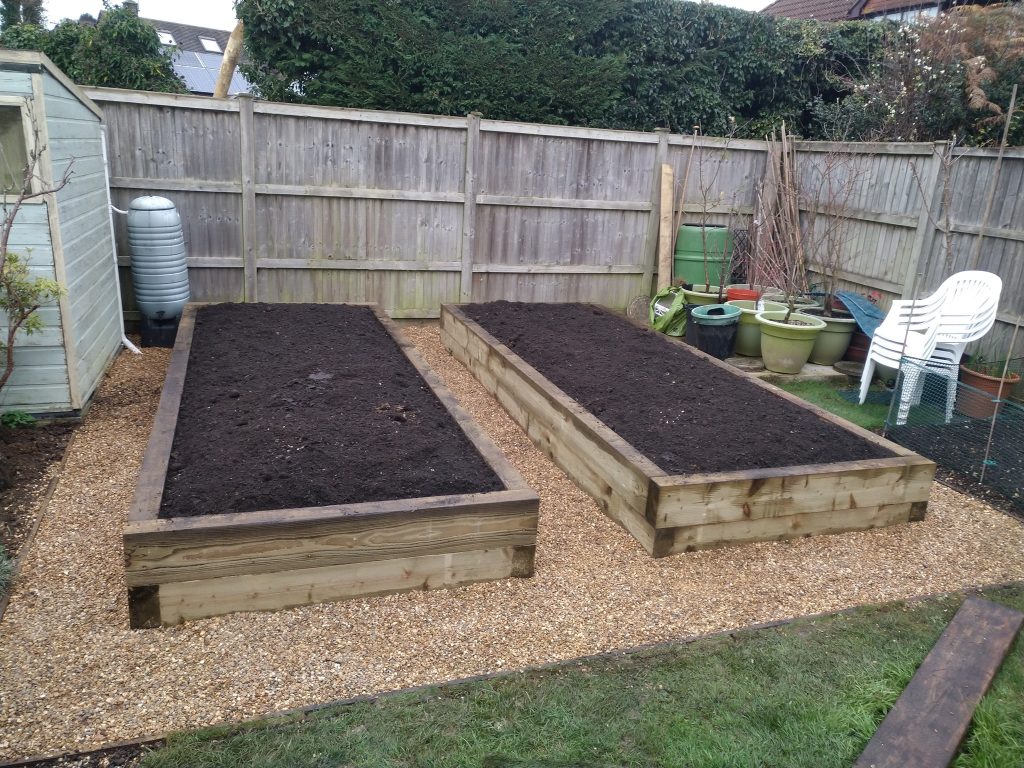
28. Make pottery
Pottery is an art form but is easy to learn with the right equipment and some practice. If you are truly aiming to be self sufficient producing essential commodities is just as important as food production.
As long as you have a sustainable source of suitable clay there are no limits for you. There is also the added benefit of being able to sell them to raise extra funds. Every now and then you will need a hot bonfire to fire the new pots.

29. Make a compost toilet
Most of the time a homestead will have suitable facilities appropriately plumbed into the building. However if you really are starting off grid a compost toilet may be the only way to go.
Literally! These consist of a deeply excavated hole ideally over a metre with a privacy screen. A comfortable seat can be built for extra luxuriousness! A loose, absorbent material can be stored close by the toilet and scattered after every deposit to reduce odour.
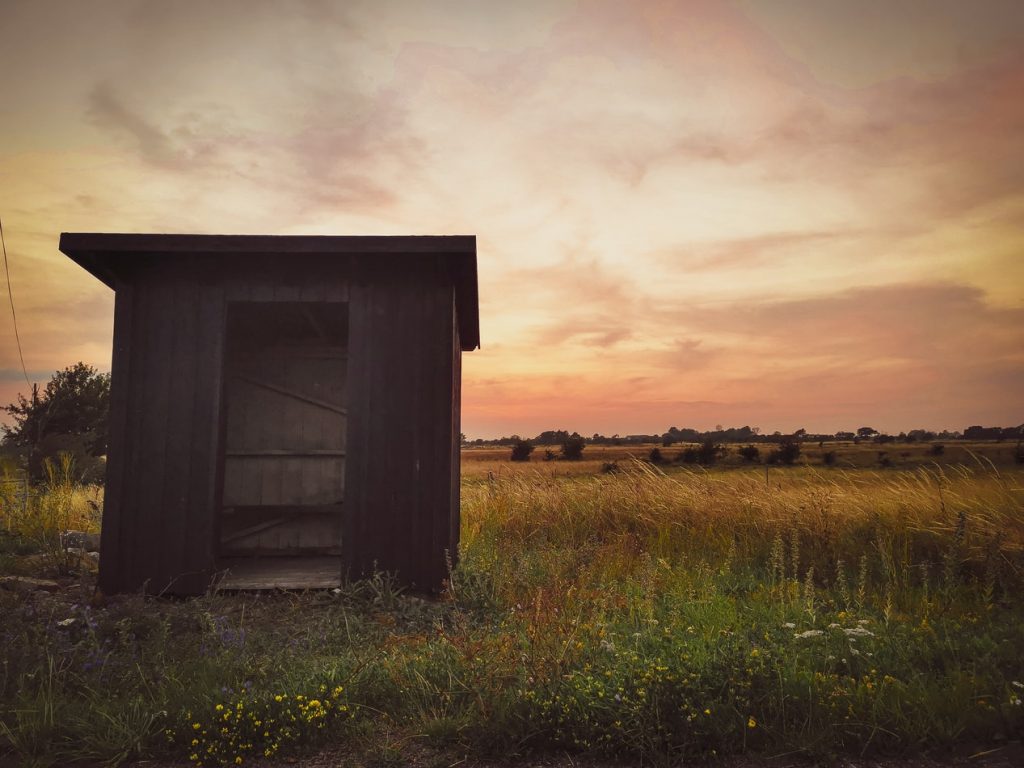
30. Bee keeping
Bee keeping is an extremely rewarding past time and takes some time to master. However if you are serious about self sufficiency this is will be beneficial to your operation.
Allowing bees to scour the landscape collecting nature’s resources on your behalf is extremely efficient. By providing them a safe place to live they will provide you energy rich honey year after year. It is worth getting a book on the subject first to get an idea if it is for you.
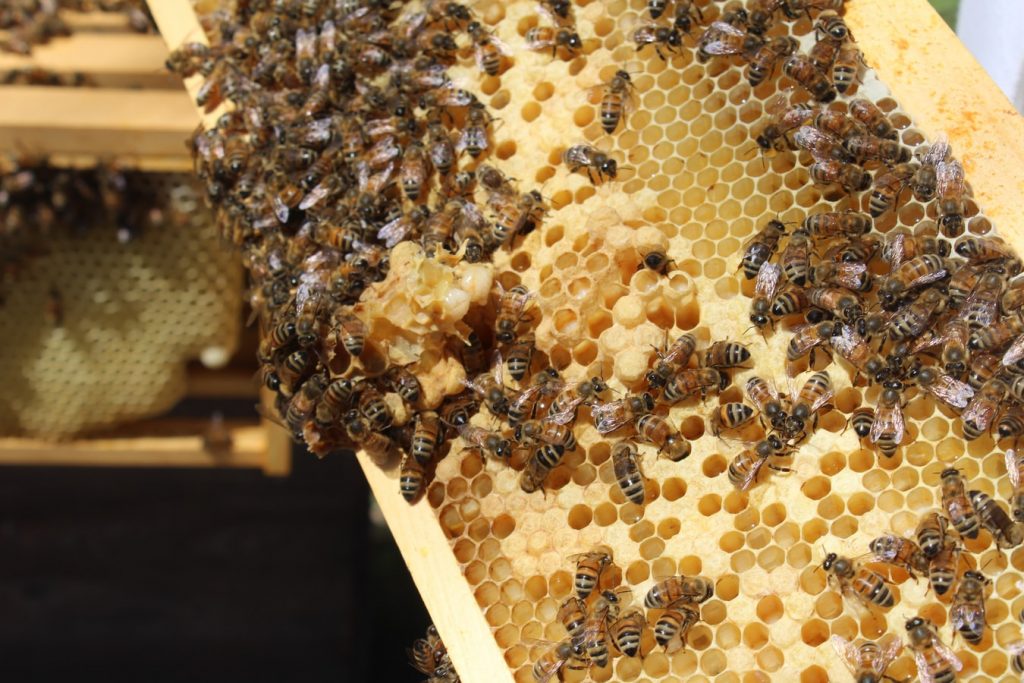
31. Candle making
Candle making is a worthwhile project and even more realistic if you are into bee keeping. Candle making is an extremely accomplished skill to have especially if there is an emergency.
Every self sufficient homesteader gains piece of mind not being completely dependent on the grid. Having the ability to produce endless supplies of candle light ‘just in case’ is a very good thing. These can be fun to produce and also have a good resale value.
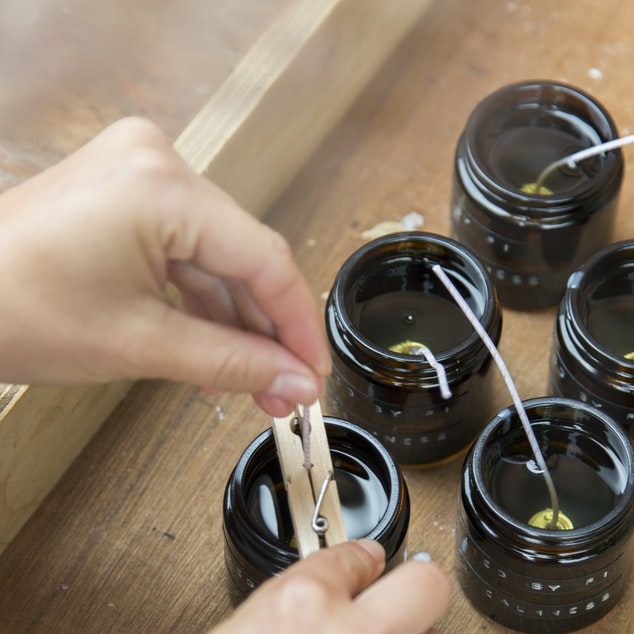
Thank you for reading our article on homesteading projects, do you think we missed anything? What projects are you working at on your homestead?
Back to home
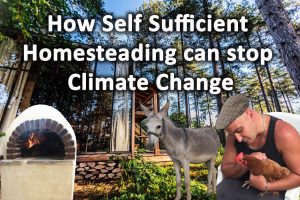
How Self Sufficiency and Homesteading can stop Climate Change
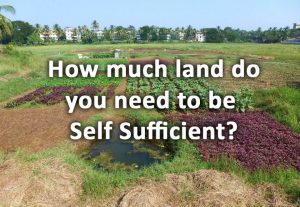
How much land do you need to be self sufficient?
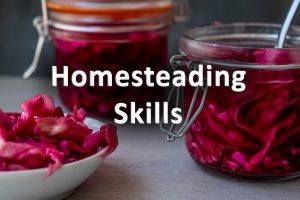
Homesteading skills, for Self Sufficiency
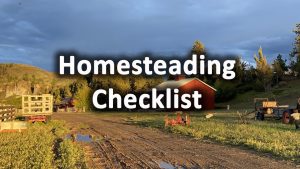
Homesteading Checklist for self sufficiency

A beginner’s guide to self sufficiency & its benefits
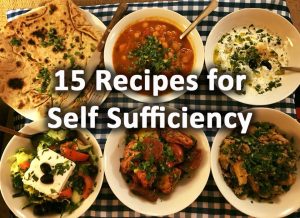
15 recipes for self sufficiency
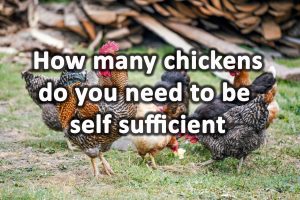
How many chickens do you need to be self sufficient?

27 foods you can forage for free near your home
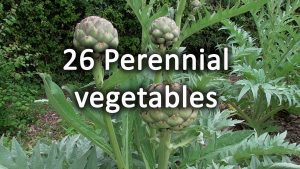
26 Perennial vegetables for the garden

Self sufficient homes
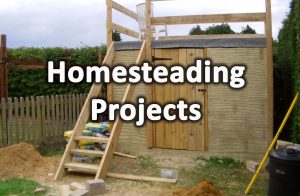
31 Homesteading projects
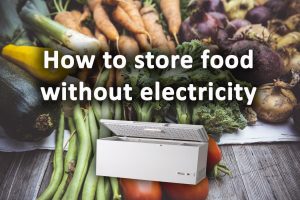
15 Ways to Store Food without Electricity

The best Climate for self sufficiency
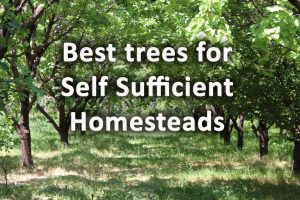
The most useful 22 Trees for a self sufficiency & homesteading
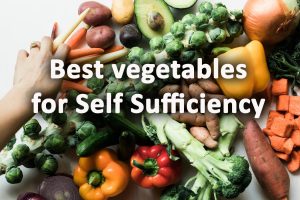
31 Vegetables for self sufficiency
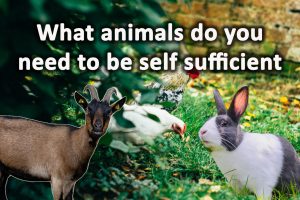
What animals do you need to be self sufficient?

How to stop Climate Change with Crops – Crops for climate change
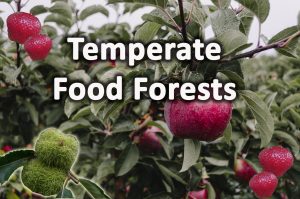
Temperate Food forests

32 Homesteading products for self sufficiency
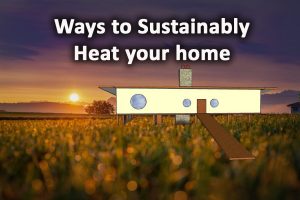
10 Ways to Sustainably Heat Your Home

10 Ways self sufficient homesteading can be good for your health
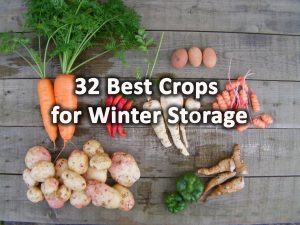
32 Best Crops for Winter Storage
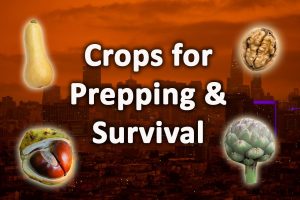
34 crops for prepping and survival
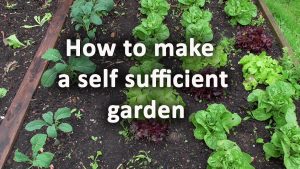
How to make a self sufficient garden
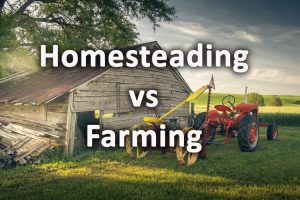
Homesteading verses farming what’s the difference?
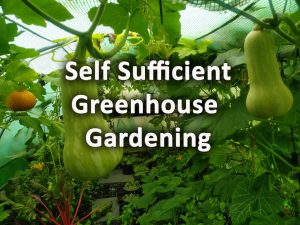
Self sufficient greenhouse gardening
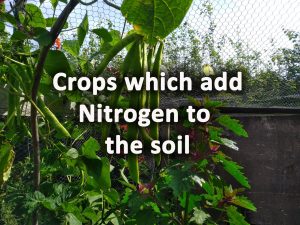
12 Crops which add nitrogen to the soil
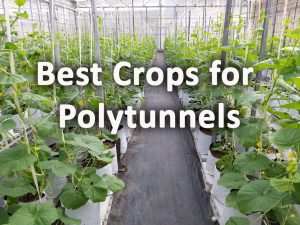
32 of the best crops for Polytunnels

12 Best Crops for Carbon Sequestration
